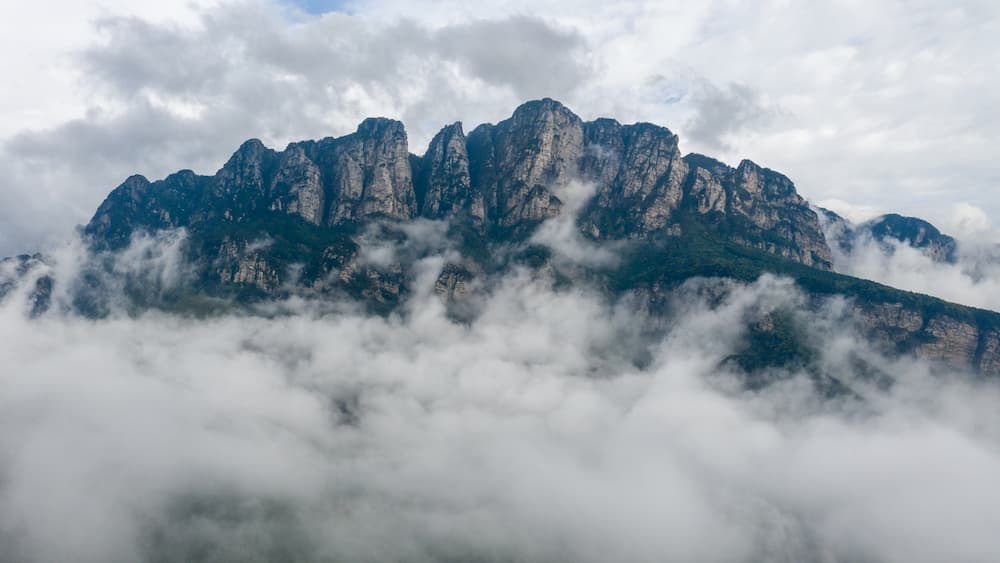
Mount Lu
Splendid
Chi Culture
Topic
Mount Lu
Lushan or Mount Lu, listed among the “Three Scenic and Five Sacred Mountains,” and is considered a landscape with Chinese characteristics. This is the birthplace of field and garden poetry, the cradle of landscape poetry, and the birthplace of landscape painting. Mount Lu is blessed with a multitude of religious cultures: Buddhism, Daoism, Christianity (both Catholicism and Protestantism), Islam, and other religious cultures are all gathered here. In the Mount Lu area, there are more than 20 ancient cultural sites, and more than 600 medieval cultural sites. In the scenic area, there are 16 natural wonders, 474 places of interest, more than 900 sites with cliff inscriptions, over 300 steles, and more than 600 Chinese and foreign villas from the modern era.
Mount Lu was inscribed on the UNESCO World Heritage Site list in 1996. The Lushan Quaternary Glaciation National Geopark is part of UNESCO’s Global Geopark Network, and a National Key Cultural Relic Protection Unit.
There are 171 peaks of Mount Lu that have been named since antiquity. There are 26 ridges and hills spread across the mountain range, 20 graben (rift) valleys, 16 grottoes, and 22 unique rockeries. The rivers have created knickpoints, which produce the many rapids and waterfalls on the mountain. The Mount Lu scenic area covers 302 square kilometers, and the protected peripheral area is 500 square kilometers. Scenic spots are everywhere on the mountain. Highways going around the mountain were built centered at the main street of Kuling township. Two highways, one to the northern part of the mountain and the other to the southern part, connect Jiujiang and Nanchang respectively. The highways also connect many popular attractions, such as Donggu (Eastern valley), Xigu (Western valley), Xiao tianchi (Lesser heavenly pond), Xianren dong (Immortal caverns), Da tianchi (Greater heavenly pond), Sanbaoshu (Three precious trees), Huanglong tan (Yellow dragon pond), and Hanpo kou (Hanpo mountain pass).
Not only does Mount Lu have beautiful scenery, it also has profound cultural connotations. The ancients were always mystified by such a lofty and beautiful mountain that suddenly thrusts upward a thousand li (approximately 500 kilometers) toward the sky from level land. On the mountain, there are numerous waterfalls and streams. Many mythological stories were invented to explain the origin of Mt. Lu and its spring-fed waterfalls. Stories such as “Hut of the Immortals,” “People are Gone but the Hut Remains,” and “Collecting Pieces of the Mountain to Plug up the Ocean” are still being told with great gusto.
Mount Lu is associated with many famous people. In the past, numerous emperors and literati traveled there. Countless writers, literati, celebrities, and people of high-ideals and integrity have left numerous paintings and writings about Mt. Lu. Legend says that when Yu of the Xia dynasty (ca. 2100–ca. 1600 BCE) was dredging the Jiujiang River, he visited Mt. Lu. Qin Shihuang (First Emperor of Qin, 259–210 BCE) climbed Mount Lu when he was making an inspection tour to the south. The historian Sima Qian (145–90 BCE) wrote in his Records of the Historian: “I ascended Mount Lu from the south, and viewed the Jiujiang River that was once dredged by Yu.” Other great writers of the past including Tao Yuanming (365–427), Li Bai (701–762), Du Fu (712–770), Bai Juyi (772–846), Fan Zhongyan (989–1052), Su Shi (1037–1101), Lu You (1125–1210), and Wang Yangming (1472–1529) have all composed poems or ci (song lyrics) about Mount Lu. Other notables, such as military general Yue Fei (1103–1142), scholar-general Wen Tianxiang (1236–1283), scholar and herbalist Li Shizhen (1518–1593), and travel writer and geographer Xu Xiake (1587–1641) also visited this place; all together more than 4,000 poems and prose pieces have been written about Mt. Lu. These literary works further established the reputation of Mount Lu as a cultural site. The high artistic quality of the calligraphy and stele inscriptions found on the mountain has also contributed to its reputation; they are now treasures of China’s tourism culture.
Mount Lu has played a very important role in modern Chinese history. From the end of the nineteenth century to the 1930s, missionaries, businessmen, and celebrities have built over a thousand distinctively styled villas on the mountain. For example, there is the former house of American writer and novelist Pearl S. Buck (1892–1973), and the Meilu (beautiful hut) of Soong Mei-ling (a.k.a. Madame Chiang Kai-shek). There are 636 of these villas that remain in good condition. There are also a large number of foreign churches, banks, shops, schools, hospitals, as well as municipal councils here. Mount Lu has become a unique representation of the Western culture that once influenced the Chinese hinterland.
Under the Nationalist government (1925–1948), Mount Lu was the summer capital, and therefore became important in political history. In the summer of 1937, Zhou Enlai (1898–1976) twice went to Mount Lu to negotiate with Chiang Kai-shek (1887–1975), the chairman of the National Military Council of the Nationalist Government of the Republic of China. Zhou in his famous “The Central Committee of the Communist Party of China Announces the Declaration on Cooperation between the Kuomintang and the Communist Party” urged that both parties joined forces to fight the invading Japanese army. Between 1959 and 1970, the Central Committee of the Communist Party of China held three meetings at Mount Lu that decisively influenced Chinese history. On account of these events, Mount Lu retains a powerful atmosphere of political history.



